
The Avro 504 was a First World War biplane aircraft made by the Avro aircraft company and under licence by others. Production during the war totalled 8,970 and continued for almost 20 years, making it the most-produced aircraft of any kind that served in any military capacity during the First World War. More than 10,000 were built from 1913 until production ended in 1932.

The Cierva C.30 is an autogyro designed by Juan de la Cierva and built under licence from the Cierva Autogiro Company by A V Roe & Co Ltd (Avro), Lioré-et-Olivier and Focke-Wulf.
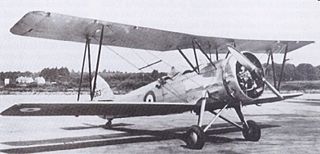
The Avro 626 is a single-engined British biplane trainer aircraft produced by Avro during the (1918-1939) inter-war period.

The Armstrong Siddeley Cheetah is a seven-cylinder British air-cooled aircraft radial engine of 834 cu in capacity introduced in 1935 and produced until 1948. Early variants of the Cheetah were initially known as the Lynx Major.

The Avro Type 621 Tutor is a two-seat British radial-engined biplane from the interwar period. It was a simple but rugged basic trainer that was used by the Royal Air Force as well as many other air arms worldwide.

The Airspeed AS.6 Envoy was a twin-engined light transport aircraft designed and produced by the British aircraft manufacturer Airspeed Ltd.
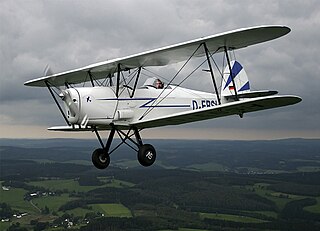
The Stampe et Vertongen SV.4 is a Belgian two-seat trainer/tourer biplane designed and built by Stampe et Vertongen. The aircraft was also built under licence in France and French Algeria.
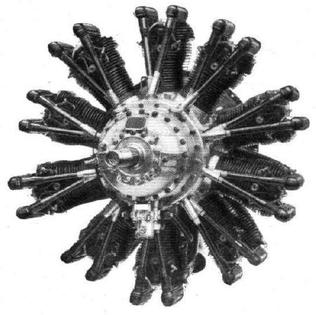
The Armstrong Siddeley Serval was a British ten-cylinder aero engine developed by Armstrong Siddeley in the late 1920s. Following company tradition, the engine was named for the serval.

The Avro 641 Commodore was a British single-engine five-seat cabin biplane built by Avro in the mid-1930s for private use. A total of only six were built, including the prototype.

The Koolhoven F.K.51 was a 1930s Dutch two-seat basic training biplane built by the Koolhoven Company.

The Cierva C.19 was a 1930s British two-seat autogyro, designed by Spanish engineer Juan de la Cierva. It was built by Avro as the Avro Type 620. It proved to be the most successful and widely produced of the early de la Cierva designs.
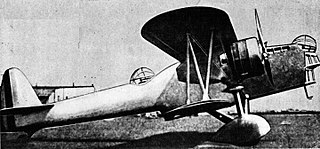
The LACAB GR.8 Doryphore was a prototype Belgian multi-role combat aircraft of the 1930s. A twin-engined biplane, it was intended to carry out bombing and reconnaissance missions, as well as act as an escort fighter. It was already obsolete when completed and no more were built.

The Stampe et Vertongen RSV.26/140, RSV.26/180, and RSV.26 Lynx were a family of training biplanes designed by Alfred Renard and built by Stampe et Vertongen in Belgium in the 1920s. They were produced as a response to a requirement by the Belgian Air Force, which became their biggest user, although private owners also bought a small number.

The Stampe et Vertongen RSV.26/100, RSV.18/100, RSV.26/18, and SV.18 were a family of two-seat touring aircraft designed by Alfred Renard and built by Stampe et Vertongen in Belgium in the 1920s and under license by Gates Aircraft in the United States as the Gates Convertiplane. Originally designed as a biplane, a monoplane version soon followed, and the aircraft was eventually marketed as convertible between the two configurations. Sometimes described as a lightened version of the RSV.26/140 military trainer, the RSV.26/100 was actually a fresh design.
The Stampe et Vertongen RSV.22 was a training biplane produced in Belgium in the 1920s.
The Stampe et Vertongen RSV.28/180 Type III, also known as the RSV.28-PSV was a military trainer aircraft built in Belgium to teach instrument-flying techniques. It was a response to a 1929 order from the Belgian Air Force, whose instrument-flying certification required a flight around a 100-kilometre (62 mi) triangular course and return to a point less than 5 kilometres (3.1 mi) from the start, using instruments only.
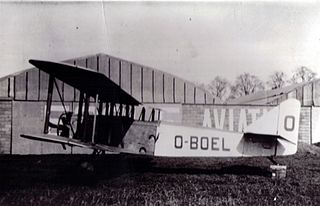
The Stampe et Vertongen RSV.32 was a trainer aircraft produced in Belgium in the early 1920s. Designed originally for the Stampe et Vertongen flying school, the Belgian Air Force became a major operator of the type, where it became the first aircraft of entirely Belgian design and manufacture to enter service. Many others were purchased by flying clubs and private owners. No RSV.32 was in existence by the end of World War II.
The Renard R.34 was a 1930s Belgian two-seat biplane trainer designed by Alfred Renard and built by Societé Anonyme des Avions et Moteurs Renard.
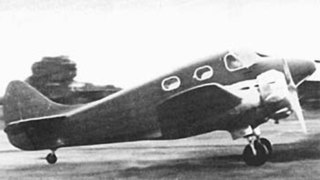
The VEF JDA-10M was a Latvian twin-engine, multipurpose aircraft built in 1939 by VEF. It remains the only twin-engine aircraft ever built in Latvia. The builder of JDA-10M was Latvian-American engineer Jānis Akermanis, a professor at the University of Minnesota.
The Stampe et Vertongen ST.26 was a 1930s Belgian military blind- and night-flying trainer aircraft.
















